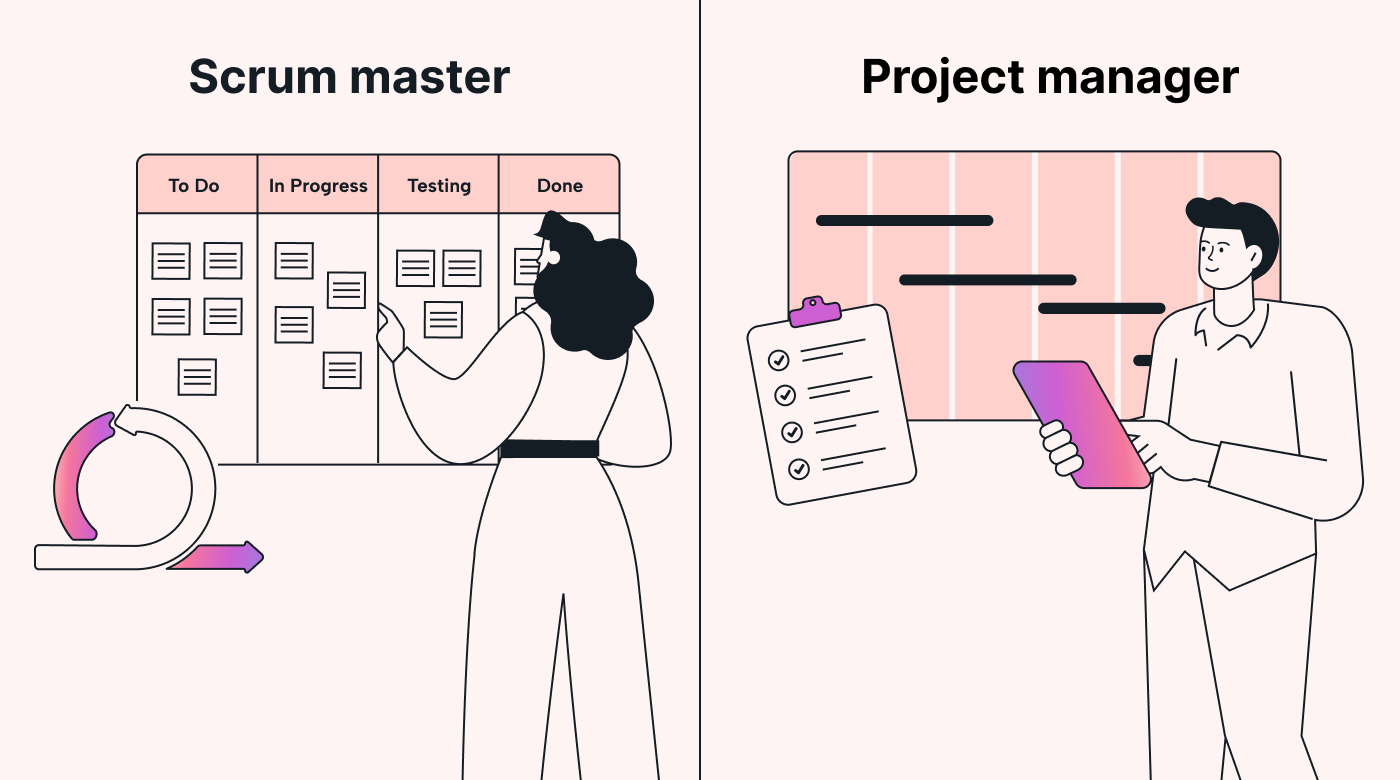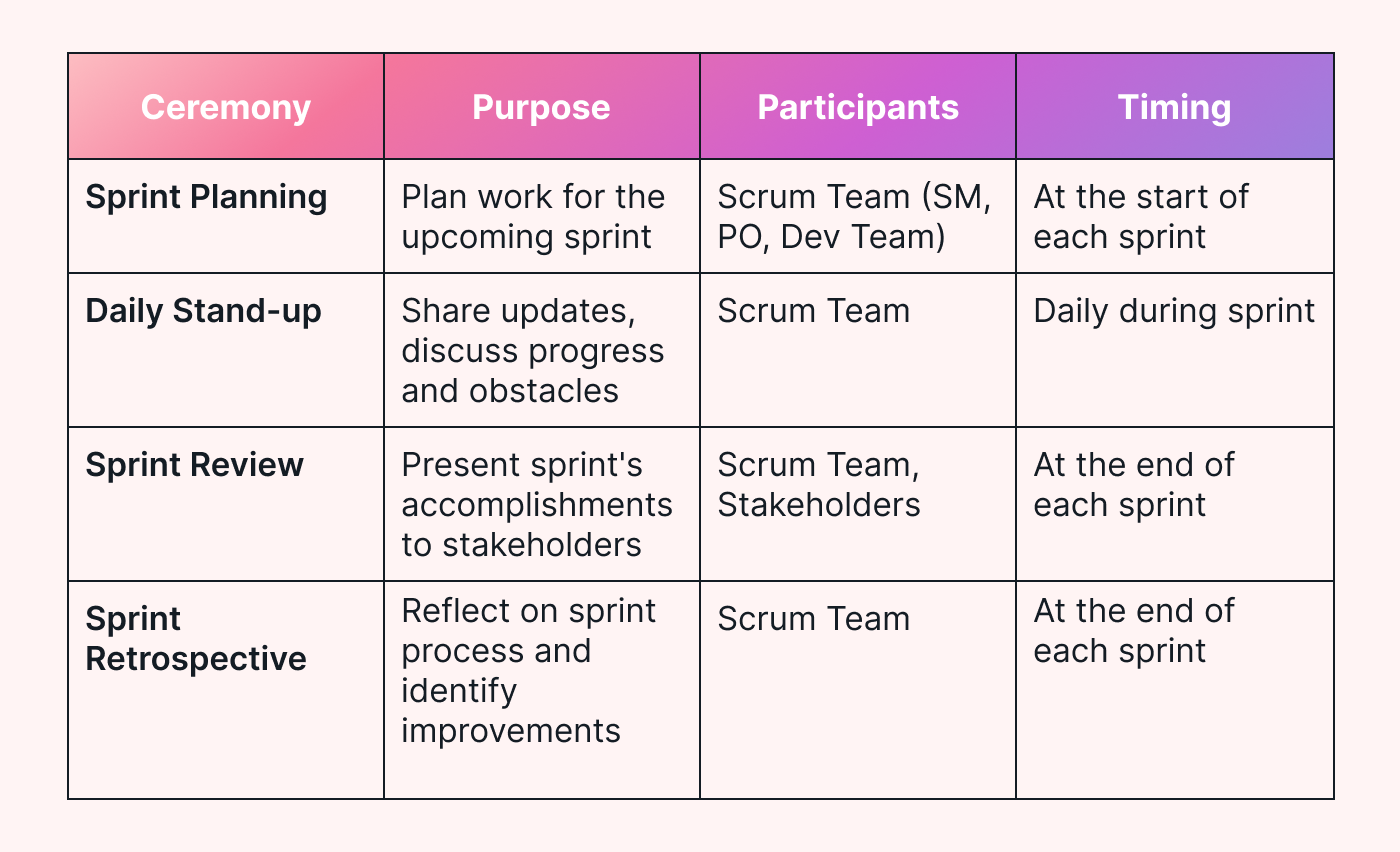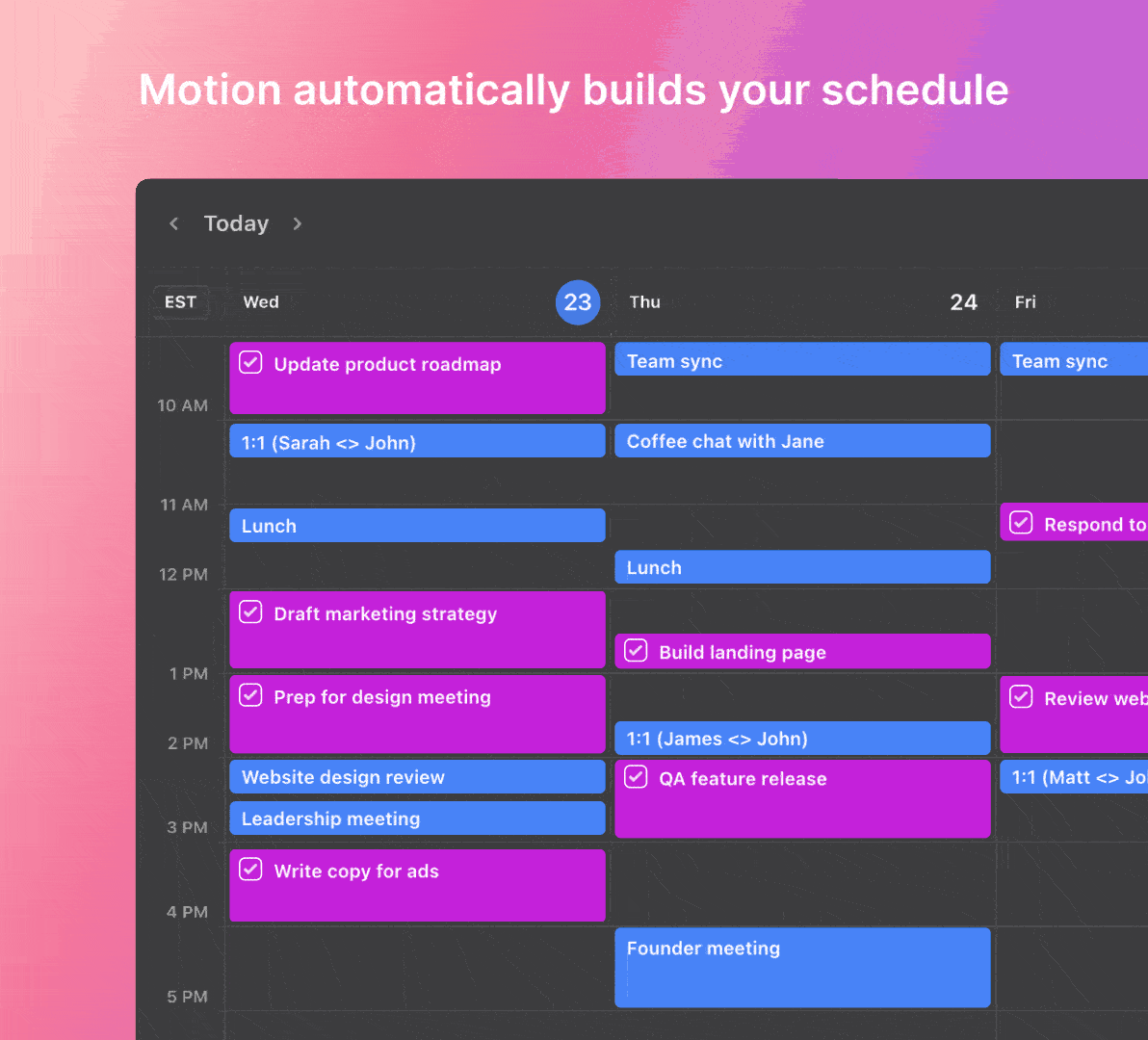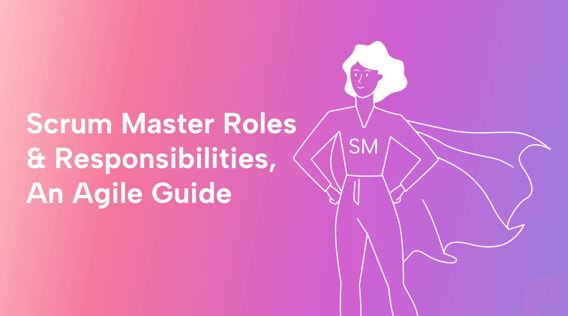You’ve got hundreds of plates in the air managing your projects. Ever wonder how a Scrum Master would juggle those?
Scrum Masters wear many hats (and have many responsibilities). They’re the champions of the Agile mindset.
But with all these roles and duties, they can sometimes get overwhelmed or overworked. This is especially true if they don’t have the necessary tools and techniques to properly do the job.
In this article, we’ll demystify the roles and responsibilities of Scrum Masters and give you some tools and tips to help manage all those plates.
What is a Scrum Master?
The Scrum Master is a guiding player in the success of Agile projects. They're catalysts for a culture of self-organization and operational harmony.
In contrast to project managers, Scrum Masters don't wield authority. In contrast to project managers, Scrum Masters don't wield authority. Instead, as servant leaders, they inspire and lead by example (more on this later).
Traditional project methodologies, such as Waterfall, focus on following predetermined plans. However, Scrum embraces adaptability. Scrum Masters are comfortable with change and strive for iterative progress.
The demand for Scrum Masters is soaring. This report highlights that 66% of companies adopt Scrum as their Agile framework.
A Scrum Master's salary can vary based on factors like experience, location, and industry. At the moment, the industry average is around $115,475 per year, according to Glassdoor.
The 3 Scrum Master roles
Scrum Masters wear three hats (or roles) within organizations.
 |
1. Within Scrum teams
One of a Scrum Master’s most significant commitments is prioritizing the team's needs and removing any obstacles.
This often means they'll jump in on the technical work and find solutions alongside frontline staff. Or they'll handle team conflicts to ensure it doesn’t affect team output.
Scrum Masters inspire efficient teamwork and effective decision-making. The idea is to create a team that can handle any project autonomously (and to continuously improve).
As the go-to source for clarifying Agile and Scrum practices, they must keep everyone on the same page. To do this, they host and guide daily standups and other Agile ceremonies (formal and informal team discussions) that drive the work and continuous team improvement.
2. Within the business
Scrum Masters help shape the organization's approach to Agile.
They're responsible for introducing adaptive practices and facilitating adoption within the organization. Typically, this means training and mentoring the team and staff.
Scrum Masters can be instrumental in cross-functional businesses that struggle with communication bottlenecks.
3. With the product owner
The partnership between Scrum Masters and product owners is pivotal to achieving product (or service) success.
Scrum Masters help refine and prioritize the product backlog alongside the product owner. Together, they'll select items from the product backlog to work on in the Scrum sprints.
Scrum masters must be great collaborators with top-notch communication skills.
Scrum Master vs. product manager
A Scrum Master facilitates, fosters teamwork, removes obstacles, and champions Agile.
A product manager, on the other hand, is in charge of the product's vision, strategy, and market alignment. They ensure high-quality product value that's competitive in the market.
The key difference lies in the focus of each role:
- A Scrum Master empowers the team and optimizes the development process.
- A product manager makes sure the product fits market demand.
Scrum Master vs. project manager
Scrum Masters typically aren't responsible for budget management or operational logistics. These fall under the domain of project managers.
 |
Project managers apply project management best practices, tools, and techniques. This includes allocating resources, managing budgets, planning, mapping timelines, etc.
Scrum Master occasionally acts as a project manager (or works alongside one) to help plan, manage, and execute Agile projects.
7 important Scrum Master responsibilities
Scrum Masters have seven key duties that are pivotal to being successful.
Sprint planning
One of the Scrum Master's primary responsibilities is to guide sprint planning meetings.
A sprint is a time-boxed period (usually 2–4 weeks) during which a team works on a set of prioritized tasks from the backlog. It's like a mini-project within a project, where the team works together to deliver a working product increment.
During sprint planning sessions, the Scrum Master works with the team to select backlog items for the upcoming sprint. When planning the work, they aim for a balance between the team's capacity and the scope of work.
Scrum Masters also manages the sprint backlog. This means making sure each item is detailed, prioritized, and ready to go. With a strong backlog, the Scrum team will have a consistent flow of high-value tasks to work on.
Mentor others
A Scrum Master fosters an understanding of Agile values and principles within the team. Values that include customer satisfaction, teamwork, and flexibility (and are the foundation of Agile success).
For example, imagine a product team that's building an e-commerce website.
Because the Scrum team follows Agile principles, they deliver functional features in short iterations. They then gather user feedback, and the team adapts future iterations to improve the user experience.
Understanding these principles shapes the team's problem-solving approach. They more easily navigate complex challenges with an open mind, adjusting strategies as needed.
Scrum Masters also coach new team members on Agile concepts, roles, ceremonies, and artifacts when onboarding. Although Scrum is popular, some people aren't familiar with it. Guiding newcomers accelerates their learning curve.
Collaboration architect
A Scrum Master should actively identify and address conflicts within the Scrum team. They need to create a work environment where everyone feels safe expressing their opinions and concerns. To do this, they use skills like active listening, open dialogue, and empathy to dig deep and find common solutions.
Scrum Masters use conflict resolution approaches to transform conflict into learning opportunities.
For instance, when team members on the e-commerce product team have differing opinions on a design approach, the Scrum Master would help them find a solution. They'd do so by encouraging a mutual understanding of opinions by asking open-ended questions like:
- What approaches would work?
- What concerns do you have with this approach?
After getting to the cause of the conflict, the Scrum Master can then collect ideas and prioritize them with the team. The Scrum Master then chooses a few top approaches, and everyone discusses which is best until they agree on one as a team. It's important to explain why specific approaches are better than others, like:
- This design approach works well with our current hardware.
- This approach doesn't align with the product owner's objectives or values.
 |
To help foster effective collaboration, the Scrum Master has many tools and techniques at their disposal. For example, a retrospective is a powerful Agile ceremony that drives ongoing improvements over time. Think of them as team huddles where mistakes are hashed out, resulting in a to-do list of modifications.
Facilitate Scrum ceremonies
Another key role for Scrum Masters is to facilitate Scrum ceremonies. These ceremonies are crucial touchpoints that keep the Agile engine running smoothly.
 |
One of these ceremonies is the daily stand-up, where team members share their progress, challenges, and plans for the day (every day). In the context of our web team, the Scrum Master would gather the team, and each member would briefly share:
- What they accomplished the previous day
- What they plan to achieve today
- Impediments they're facing
Another important ceremony is the sprint review. This is where the team showcases their work from a completed sprint to stakeholders and gathers feedback.
The sprint retrospective is a lot like the review, only it's done after sprints are completed. In the retrospective, the team (but not the customer) rehash how they think the sprint went and look for ways to improve future sprints.
The Scrum Master's expertise shapes these ceremonies into structured and purposeful gatherings. As the team's needs and challenges evolve, the Scrum Master adapts these ceremonies accordingly. This flexibility means that the ceremonies remain relevant and practical.
Remove obstacles
Removing obstacles plays a big part in Scrum’s success as a methodology. Scrum masters keep a close eye on everyone to make sure that the team has no issues.
Obstacles can jeopardize Sprint commitments, and cause missed deadlines and unmet expectations.
Let's say that after the stand-up, the team found some technical challenges or resource constraints. The Scrum Master would empower the team to address these challenges proactively and work with them to come up with solutions.
If no obstacles are found, the Scrum Master still has to stay vigilant and aware of any possible obstacles.
Monitor progress
Scrum Masters often use project management tools to keep a finger on the pulse of work progress. If they spot potential deviations from the plan, they address them promptly.
For instance, a Scrum master often uses Kanban boards or other project management tools to help them keep track of progress. While checking the project progress, they might see that the web team is falling behind, and step in to find solutions.
Continuous improvement
Stealing a bit from Kaizen and the Kanban framework, the idea of continuous improvement (or incremental changes for the better) has been incorporated into the Agile methodology, including Scrum.
A hallmark of effective Scrum Masters is their ability to adapt their daily activities based on team dynamics and evolving needs.
In our example, if the team encounters changes in requirements, the Scrum Master adjusts the course accordingly. This might mean shifting tasks to future sprints once the requirements have been ironed out.
Tips, tools, and techniques from Scrum Masters
Here are some valuable tips, tools, and techniques that help Scrum Masters do their job.
Visual management
Pictures say a thousand words, right?
Visualizing work can help you plan out tasks and easily track work in progress.
Tools like Kanban boards offer a tangible way to represent backlog items in progress. With Motion's Kanban board, the Scrum Master can help the team track tasks from “To-Do” to “Done.”
Trust the data
The Scrum Master gains insights from hard data and data analytics tools. They use these tools to identify performance patterns and areas for improvement.
Think of it as having a magnifying glass to help them scrutinize how things are going (without having to track or sort tons of data).
Most project management apps come with analytical functionalities that can quickly summarize how the project is progressing or how team members are performing.
To practically apply analytics, Scrum Masters should:
- Routinely review the data
- Identify trends, patterns, and bottlenecks
- Take actionable steps based on insights
Use project management software
Project management software, like Motion, is Scrum Master's right-hand companion. They help manage the backlog, sprint items, team members, and stakeholders.
Not only that, but they are a document hub where all project-related information lives. This reduces the chances of miscommunication or tasks falling through the cracks.
Motion makes Scrum Master responsibilities easier
Motion is an AI-powered project management app with many features that are great for Agile project management.
With Motion, scheduling 1-on-1s and Scrum standups is effortless. It has a built-in meeting assistant that integrates into your (and your team's) calendars and schedules meetings at the best time for everyone. This cuts out the need for time-consuming back-and-forth emails or conversations.
 |
Motion also makes managing recurring tasks and dependencies easier (a big challenge in Scrum). The tool tracks each team member's tasks, progress, and deadlines.
Oh, it can also automate the assignment of work, and reorganize tasks if things change.
Sign up for your 7-day free trial.





